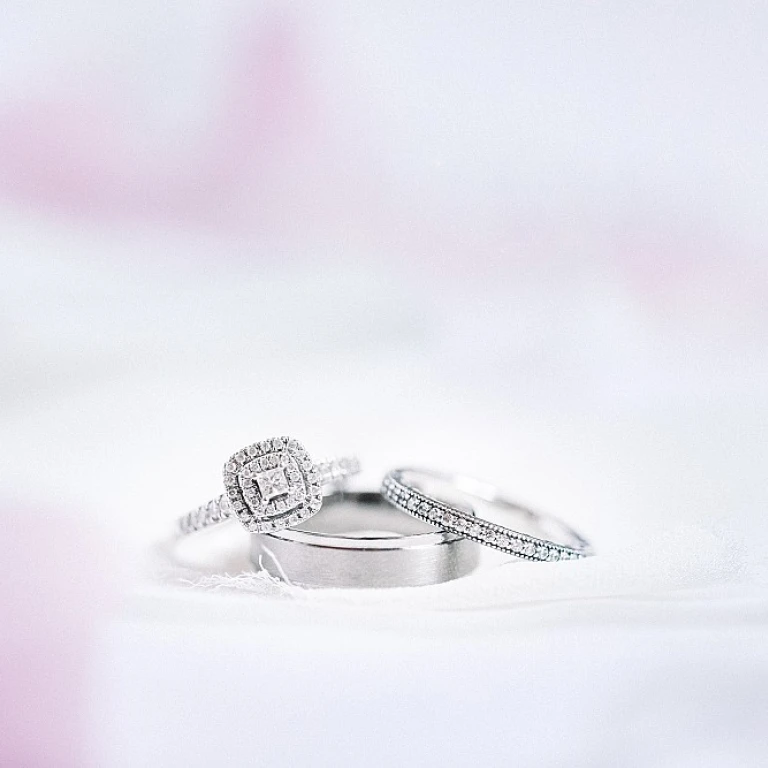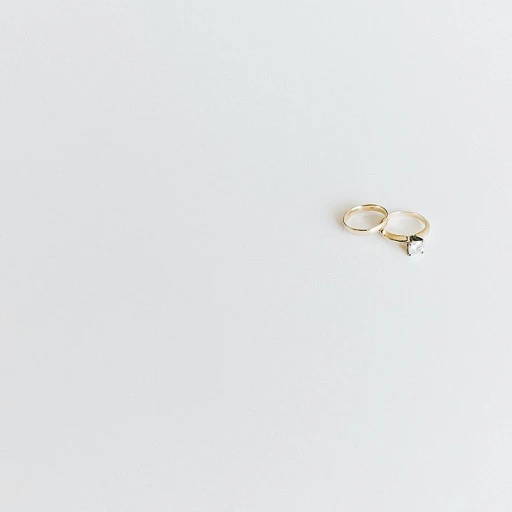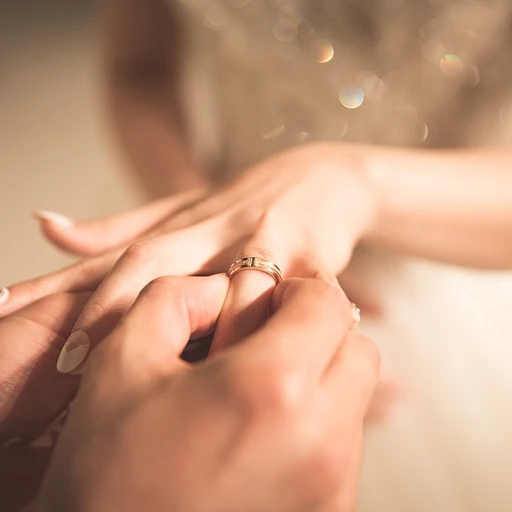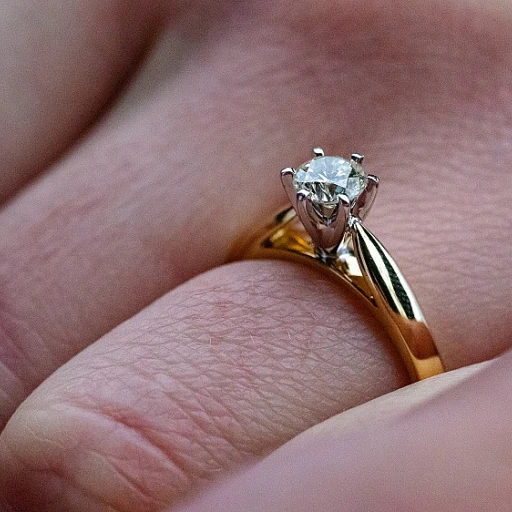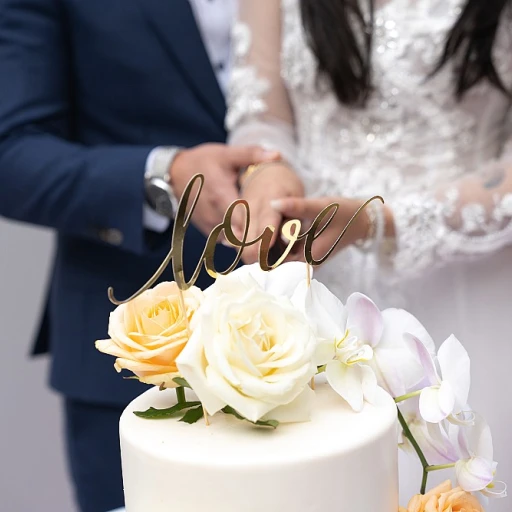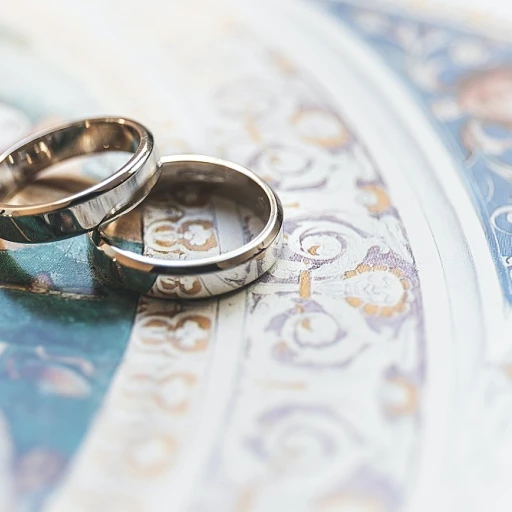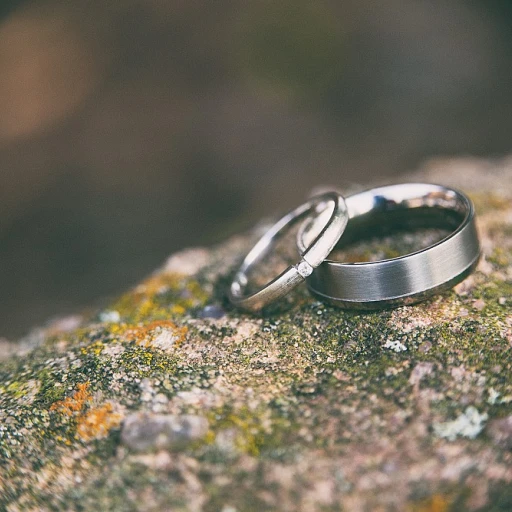Unveiling the Elegance: Platinum or White Gold for Your Wedding Band?
The Allure of Platinum and White Gold in Wedding Bands
When it comes to choosing the perfect wedding band, the decision often comes down to a match of aesthetics and symbolic significance. Platinum and white gold stand out as two of the most sought-after metals in the world of wedding rings. Each of these metals brings its distinct aura of elegance to a wedding band. Platinum, renowned for its prestigious status and rich, lustrous appearance, exudes a sense of timeless sophistication. Its natural white sheen doesn't fade or tarnish, reflecting a love that endures. On the other hand, white gold, often chosen for its modern appeal and affordability, gives off a contemporary elegance that resonates with many couples. Coated with rhodium plating for increased whiteness, white gold wedding bands shine with a brilliance that captures the essence of a sparkling future together.
The Symbolism Behind Choosing Platinum or White Gold
Choosing between platinum and white gold isn't merely a matter of personal preference; it's also a reflection of one's values and aspirations. Platinum wedding bands are incredibly dense and durable, symbolizing a sturdy, unbreakable bond. Statistically, a majority of couples view the durability of their bands as an analogy to their commitment – for better, for worse. For those looking to make an eco-conscious statement, it's worth noting that platinum is often mined with less environmental impact compared to gold mining. Conversely, white gold represents a harmonious blend of tradition and innovation—gold alloyed with other metals to achieve its signature color—mirroring a partnership that grows and adapts. The choice between the two is, therefore, poignant, speaking volumes about the couple's journey and future.
Reflecting on Style and Taste: Platinum VS White Gold
Every couple wants their wedding band to be a testament to their unique story. With a diverse range of styles available, both platinum and white gold bands can be effortlessly tailored to suit individual taste. Platinum's density allows it to hold precious stones securely, often used in intricate, heirloom-quality designs. Wedding planners and jewelers note an increasing trend of couples opting for custom-designed platinum bands that reflect unique narratives and styles. White gold, versatile and complementary with a range of gemstones and styles, lends itself to a vast array of design possibilities. From sleek, minimalist bands to ornate, diamond-studded creations, white gold can adapt to reflect the personas of the wearers. Whether seeking a ring that makes a bold statement or one that whispers understated elegance, future married people have abundant choices when it comes to the perfect band.
Durability and Longevity: Which Metal Wins for Wedding Bands?
The Endurance Factor of Wedding Band Metals
When embarking on the journey of matrimony, couples seek symbols that reflect their enduring love—enter the discussion on the durability of platinum wedding bands versus white gold wedding bands. Statistics reveal a compelling narrative: platinum's density leads to a remarkably durable finish, outlasting white gold in terms of wear and tear. According to the World Platinum Investment Council, platinum jewelry has historically signified longevity, which admirably mirrors the commitment made between married individuals.
Tale of the Tarnish: Metal Reactions Over Time
Interacting with the elements, white gold may gradually reveal a yellowish tint, a testament to its gold lineage. This phenomenon piques the attention of jewelers, prompting rhodium plating to restore its luster—a service that some sources estimate may be required every few years. In contrast, platinum enthusiasts celebrate its steadfast color and sheen, exemplifying the metal's resilience and upholding its status as a beacon of unwavering commitment.
Scratch Resistance: A Comparison of Metals
Wedding bands encounter daily activities that test their mettle, and understanding scratch resistance becomes pivotal. While platinum is durable, it's not immune to scratches; however, instead of losing material, it merely displaces it, developing a coveted patina over time that many believe enhances its character. Meanwhile, white gold's susceptibility to scratches and the subsequent material loss calls for occasional polishing. This distinction is crucial for couples considering how lifestyle and activity levels reflect on their choice of wedding band.
Weight and Comfort: Feeling the Difference on Your Finger
On the scale of everyday comfort, the heft of a wedding band plays an unspoken role. Platinum bands are significantly denser, thus heavier, than their white gold counterparts—an aspect that influences wearer comfort, as per gemological studies. Some couples find the weightiness of platinum assuring, a constant reminder of their shared vows, while others prefer the lighter touch of white gold as a featherweight symbol of their bond.
Wear Over Time: Understanding Long-Term Aesthetics
Couples often wonder how their wedding bands will age with them. The 'patina' of platinum, a natural wear that adds character, contrasts with white gold that may require rhodium re-plating to maintain its bright white appearance. Also noteworthy, the high reflectivity of polished platinum can diminish subtle details over time, making white gold a potential preference for those with ornately designed bands, as it retains intricate patterns with greater clarity.
Evaluating the Value: The Pricing Battle Between Platinum and White Gold
Pricing Comparison of Platinum and White Gold
When selecting the ideal wedding band, price is a pivotal factor for many couples. Platinum, known for its dense and pure composition, often comes with a higher price tag compared to white gold. This is because platinum is rarer and has a greater weight, which translates to more metal used in each ring. In the global market, as of recent years, platinum has been approximately 30% to 50% more expensive than gold, though market fluctuations can vary this percentage.
White gold, on the other hand, is made by alloying pure gold with white metals such as nickel or palladium, and is often coated with rhodium for added luster. This process allows for a more budget-friendly option, making white gold wedding bands typically less expensive than their platinum counterparts. According to The Knot's recent jewelry and engagement study, a large percentage of couples consider cost as a major deciding factor, which makes the lower-priced white gold an attractive option for many.
The Investment Perspective
However, when evaluating wedding bands, it's important to look beyond the initial cost. Platinum's durability means it may require less maintenance over time, potentially saving money in the long run. White gold, while cheaper initially, may require re-plating to maintain its white luster, adding to the total cost over the years.
Considering the investment aspect of wedding bands, it's worth noting that both platinum and white gold have intrinsic value that does not depreciate. On the contrary, they can act as a form of financial security. For instance, the increasing global demand for gold has led to a steady appreciation in value, a trend reflected in numerous financial reports.
Calculating Long-Term Value
To really understand the long-term value, couples should consider maintenance costs, potential future repairs, and the longevity of the material. A savvy couple might calculate the cost per wear, a metric which divides the total investment by the estimated number of times the band will be worn. For those who plan on daily wear over a lifetime, platinum might offer a more cost-effective choice.
Statistically speaking, while the upfront cost may be higher for platinum, the long-term investment could be more beneficial. Historical data shows minimal need for costly repairs with platinum, which maintains its natural white color and doesn't fade or change color over time. These savings, over the course of a marriage, can be substantial when compared to the recurring costs associated with maintaining a white gold band.
- Upfront cost: Platinum > White Gold
- Long-term value: Platinum may be more cost-effective due to lower maintenance.
- Potential for appreciation: Both metals have investment potential.
Hypoallergenic Qualities: Considering Comfort in Metal Choice
Hypoallergenic Factors in Wedding Band Metals
As we navigate the nuances of selecting the perfect wedding band, one cannot underestimate the significance of hypoallergenic properties. For future spouses, the comfort and well-being provided by hypoallergenic wedding bands are paramount. It's a detail that speaks volumes, marrying the intimate connection with everyday comfort. Platinum, with its naturally white sheen, stands out as the epitome of hypoallergenic excellence. This metal is incredibly pure, typically 95% platinum, which significantly reduces the risk of skin irritation.
On the other hand, white gold, known for its affordability and popularity, may pose concerns for those with sensitive skin. Often, white gold is alloyed with other metals like nickel, which is a common allergen. Statistics reveal that approximately 10-20% of the population is allergic to nickel, proving the significance of this consideration. The process of rhodium plating does provide a temporary barrier, but as the plating wears off over time, reapplication becomes necessary to maintain both its luster and hypoallergenic shield.
The Impact of Metal Alloys and Skin Sensitivity
- Platinum's purity lessens the possibility of skin reactions.
- White gold may contain allergenic metals such as nickel.
- Regular maintenance of white gold is necessary to uphold its hypoallergenic characteristics.
Evidence supports that while both metals are esteemed for their beauty and durability, as discussed previously, the prominence of platinum in the realm of hypoallergenic options cannot be overstated. Anecdotally, jewelers and wearers alike have noted the comfort of wearing platinum, especially for those with known sensitivities. Diving deeper into the analytical aspect, the decision between platinum and white gold could very well hinge on personal skin chemistry.
"Selecting a wedding band is not only a choice of aesthetics but also one of health and comfort," expresses a leading wedding jewelry consultant. This sentiment captures the essence of metal choice for wedding bands, emphasizing the necessity to consider personal allergies and skin sensitivity. Couples looking for a harmonious blend of elegance and dermatological peace of mind often lean towards platinum.
While the upfront cost of platinum, which was addressed in the value evaluation, might be higher, the long-term benefits of hypoallergenic comfort are priceless. Statistics showcasing the rates of metal allergies further underscore the criticality of choosing a band that won’t disrupt daily life with discomfort or adverse reactions. Thus, the analytical future spouse would benefit from weighing these hypoallergenic attributes heavily in their decision-making process.
Citing numerical sources: A recent survey by The Knot, a leading wedding planning resource, indicates that the comfort of the wedding band is a top priority for 67% of couples, highlighting the practical aspects of wedding jewelry selection. It's not just about the visual appeal — it's about how it feels on your skin every day.

